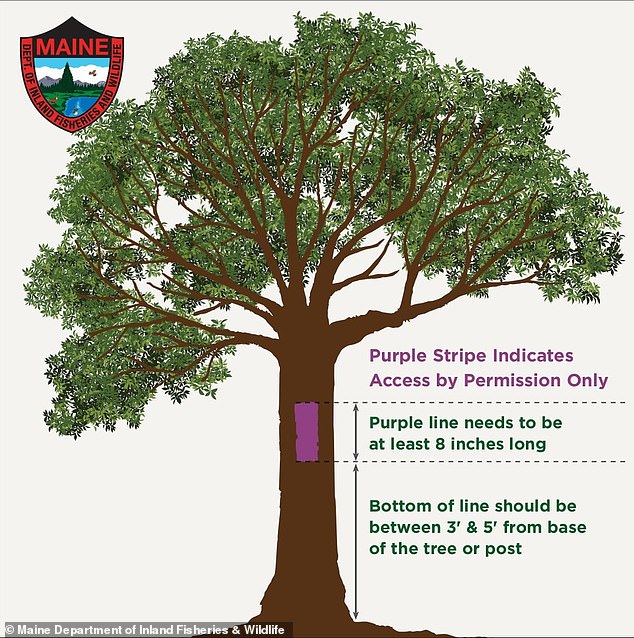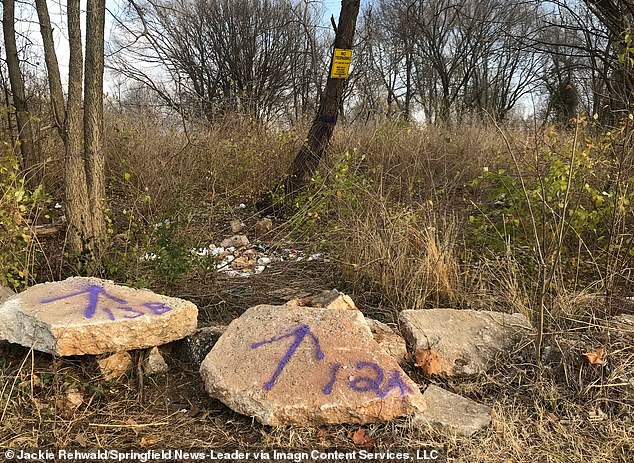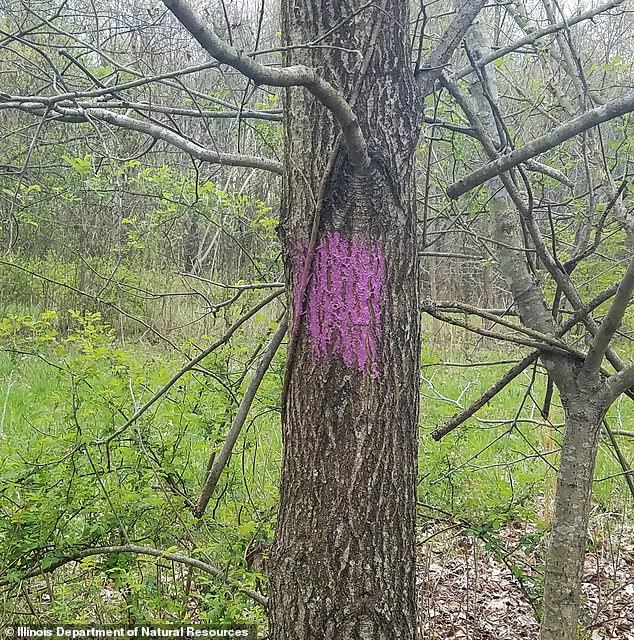There are 19 states where if you see purple paint on trees or fence posts while hiking, you must leave immediately.
This is because purple paint denotes private property in these areas, meaning you are trespassing on private property and could expose yourself to criminal prosecution.
What’s more, in a country where citizens have a constitutional right to own guns, ignoring these markings could put your life in grave danger.
States that have purple paint laws include Alabama, Arkansas, Florida, Illinois, Indiana, Iowa, Kansas, Kentucky, Louisiana, Maine, Missouri, New Hampshire, North Carolina, Pennsylvania, South Carolina, Tennessee, Texas, Virginia, and West Virginia.
However, it is important to note that in North Carolina, Virginia, and West Virginia, purple paint is not used to deter criminal trespassers, but only to notify people that they are not allowed to hunt or fish in the marked area.
Purple paint markings are used to warn people that they are trespassing if they remain in the area.
Throughout the 2000s, many state lawmakers believed that using paint was more cost effective than putting up signs that could be stolen or defaced.
Kentucky is the most recent state to allow landowners to use purple paint in this way: Democratic Gov. Andy Beshear signed Senate Bill 118 in April.
Similar bills were moving through the Connecticut and Georgia general assemblies before their respective legislative sessions concluded this year.
It is unclear why purple became the color of choice, but it is likely that when other states saw their neighbors using that color, they chose to maintain a sense of uniformity to reduce confusion.
Despite this, some states have still chosen to use different colors.
Idaho, Montana and Nevada laws rely on the use of orange paint to alert intruders.
Orange paint is also used in Arizona and Utah, but only to prohibit hunting on private property. Utah also allows landowners to use bright yellow paint for this purpose.
The real outliers are Maryland and Nebraska, which use blue and red paint respectively.

Almost all states with these laws also regulate the size of the markings on trees or poles. Above is how Maine regulates them.

Many states stipulate how far apart these markings must be. Pennsylvania law states that they must be 100 feet apart at most.
Almost all states with these laws also regulate the size of the marks on trees or posts and how far apart they must be.
The almost universal standard is that they should be about eight inches long, two to five inches wide, and between five and five feet high above the ground.
As for the distance between the marks, some states have a maximum of 100 feet apart, while others require a limit of 1,000 feet.
Other states do not have laws allowing citizens to paint objects on their land in lieu of private property signs.
Some have tried over the years to pass such bills, but without success.
Lawmakers in Minnesota and Mississippi, for example, have introduced bills on purple paint, but neither has made it past the committee stage.
Nearly identical efforts in Vermont and Ohio have failed in recent years.
Oklahoma arguably had the most high-profile failure to pass a purple paint law in 2005. The bill narrowly passed both the state House and Senate, only to be vetoed by then-Governor Brad Henry, a Democrat.
Henry argued in Your veto order that while “the concept of this legislation is good,” it could cause confusion because “many citizens may not have understood the meaning of the purple paint.”
The Oklahoma Farm Bureau criticized the move, accusing Henry of putting lawbreakers above landowners.
“Governor Henry’s veto of Senate Bill 430 favors trespassers,” said Jeramy Rich, then-Public Policy Director for the Oklahoma Farm Bureau. “He clearly chose to protect trespassers and ignore the wishes of landowners.”

Kentucky Gov. Andy Beshear, a Democrat, signed a purple paint bill into law on April 17, 2024, making his state the latest to adopt such a measure.

Landowners often paint other objects within their property boundaries besides trees, including rocks. Some also combine the painted markings with actual “no trespassing” signs.
But now such laws are gaining increasing popularity and activists and lawmakers are discussing what it would mean to adopt similar measures.
An outdoor advocate in New York, where the only legally binding way to warn people to stay off your property is with signs, said The Times Union in 2021, who believes there are advantages and disadvantages to using purple paint.
“If they have a lot of land, which could mean miles and miles of boundary lines, they have to maintain the signs every year and sometimes they get vandalized,” said Andy Mossey, advocacy coordinator for the Catskill Center. “The purple paint prevents all those problems from happening.”
But, as Gov. Henry said nearly 20 years ago, Mossey believes the risk is that paint markings mean nothing to those who are uninformed.
“The advantage of signage is that anyone passing over a boundary can easily read that there is a private land boundary,” he said.
“If it’s just purple paint with no signage, people are less likely to understand what it is unless the state itself and organizations across the state have done a significant job of communicating that information to all visitors.”
This is why some states, such as Tennessee, require property owners to post at least one clearly visible “no trespassing” sign next to any painted markings.
Today, just over half of U.S. states have standardized the use of paint to ward off intruders, and more states are likely to follow suit in the coming years.
(tags to translate)dailymail


